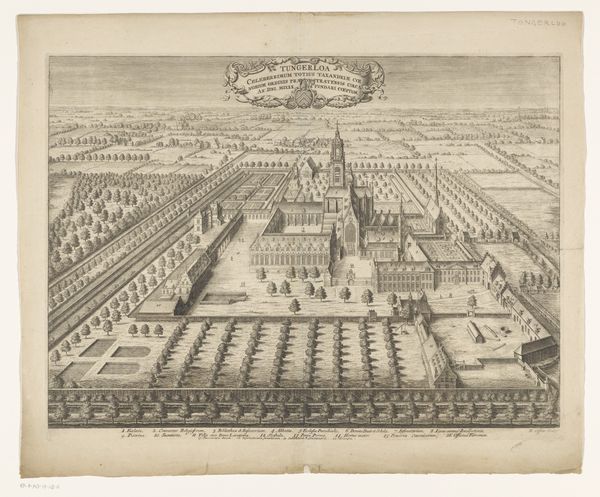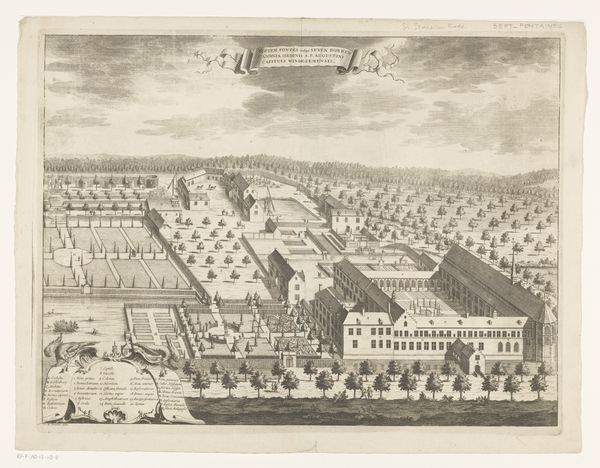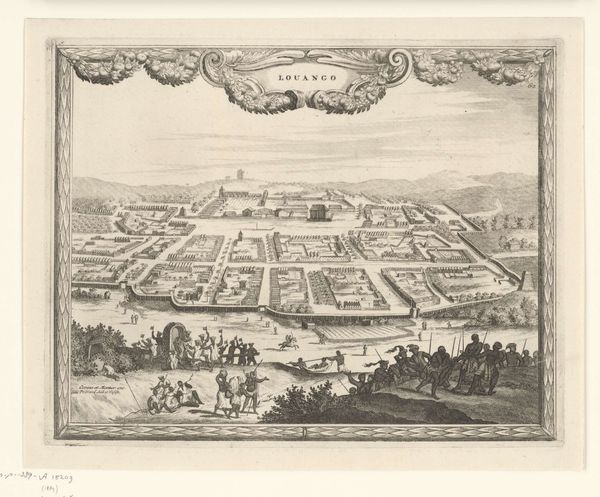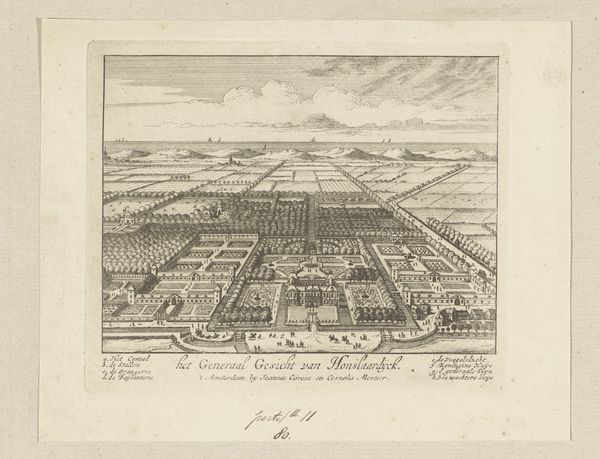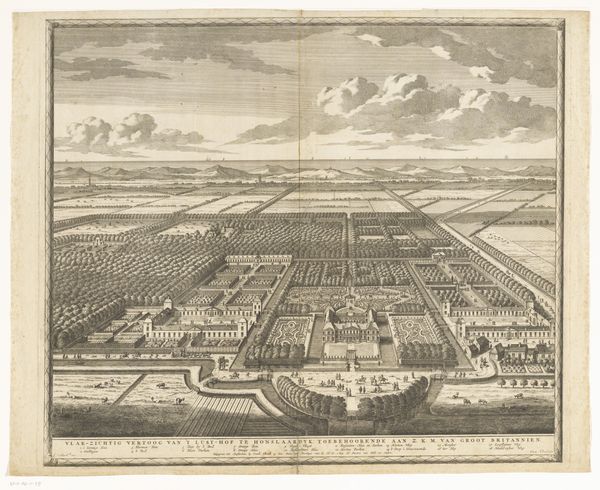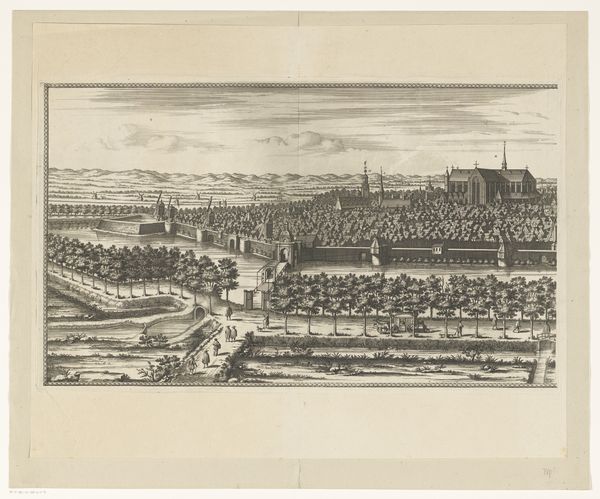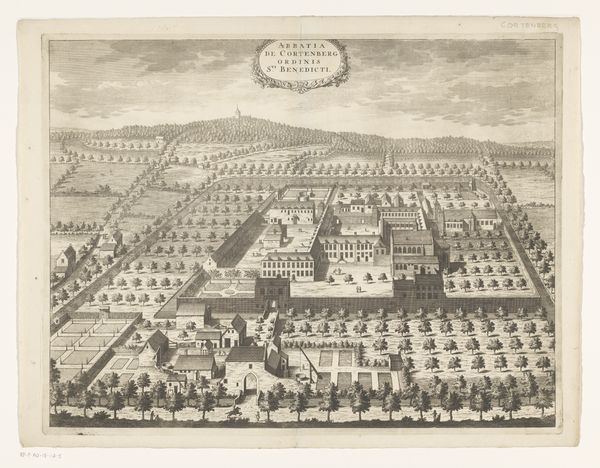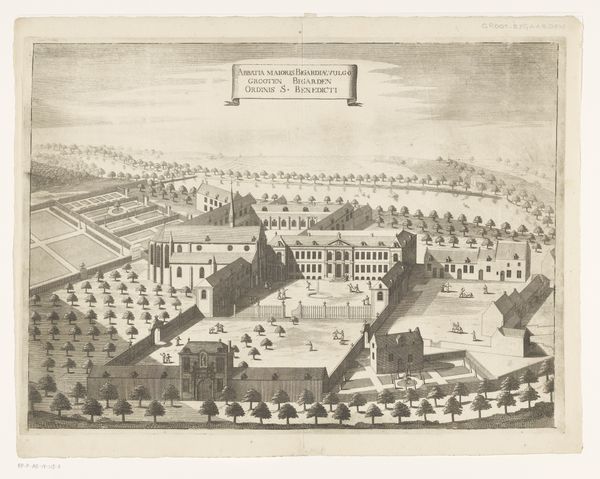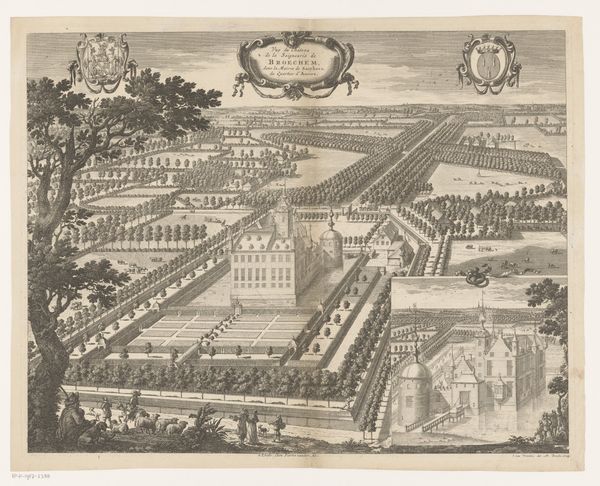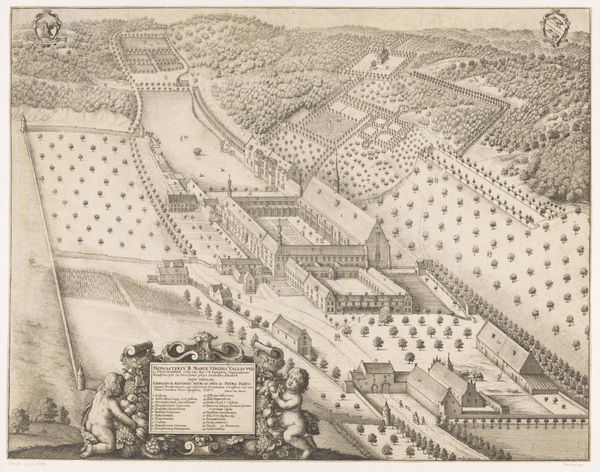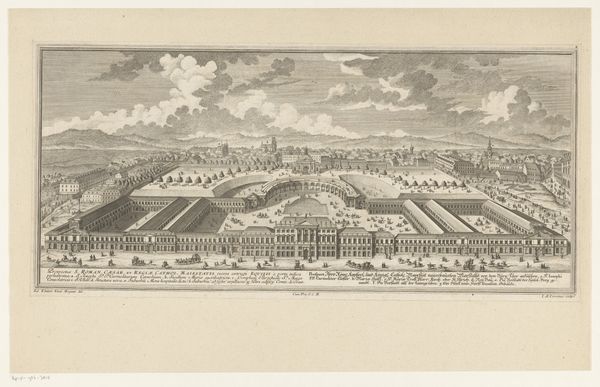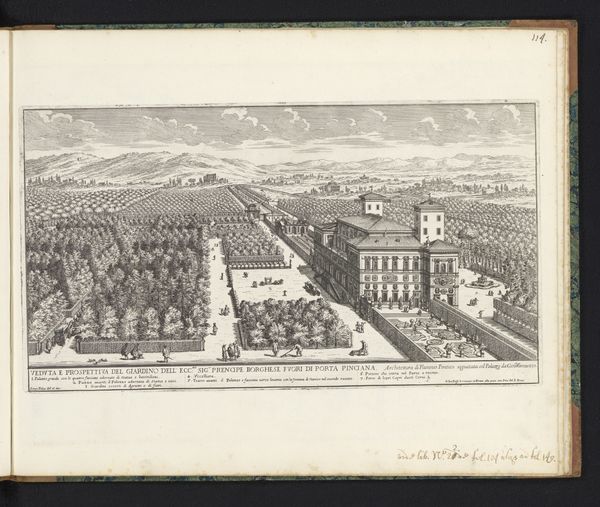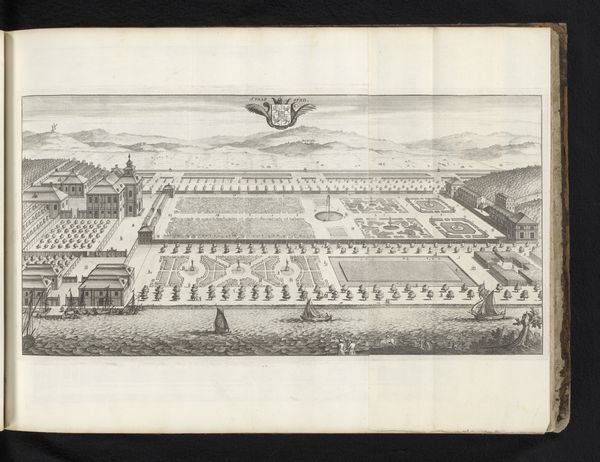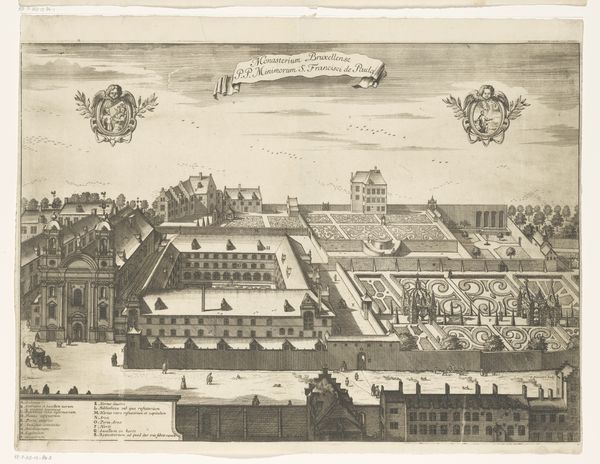
print, engraving
#
baroque
# print
#
landscape
#
perspective
#
cityscape
#
engraving
Dimensions: height 509 mm, width 595 mm
Copyright: Rijks Museum: Open Domain
Curator: Looking at this engraving from around the turn of the 18th century, "Gezicht op Paleis Het Loo," one is immediately struck by its sense of calculated grandeur. Editor: Indeed, the composition exudes a specific sort of planned control. One gets the feeling the people included are mere decorations rather than subjects who enjoy access to power. Curator: Quite. The engraving depicts Het Loo Palace, near Apeldoorn, during the reign of William III, King of England and Stadtholder of the Dutch Republic. Its symmetrical gardens, the vast grounds, and the almost bird's-eye perspective, were common approaches in Baroque depictions of power and status. Editor: Thinking of who William represented, one has to view this art in light of colonial activities funded and supported by his governance, both in England and in the Dutch Republic. In what way do you think this kind of grand statement attempts to elide some of the brutality that paid for it? Curator: That’s a crucial perspective. These visual statements often sought to legitimize power, distracting from underlying issues by emphasizing opulence and order. In this artwork we witness William and his court front and center, very similar to portraits by Van Dyck showing Charles I of England at his ease while the lower classes were oppressed, as a blatant justification for their rule and access to lands they controlled and pillaged around the world. Editor: So this print becomes a kind of record—of what those in power *wanted* to be believed at the time, an official history crafted through images that conveniently omits the voices of the marginalized. How fascinating to have such explicit visual strategies! Curator: Precisely! Examining the relationship between art and social history reveals so much about not just the period when something was created, but about art's ability to frame sociopolitical ideology through different media for an enduring legacy. Editor: Absolutely, by analyzing the socio-political undertones of works like "Gezicht op Paleis Het Loo", we create pathways to unearth silenced perspectives, and ultimately enrich the narrative, ensuring that historical awareness stays vigilant.
Comments
No comments
Be the first to comment and join the conversation on the ultimate creative platform.
